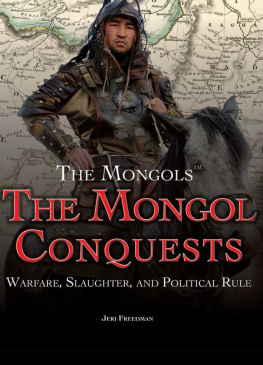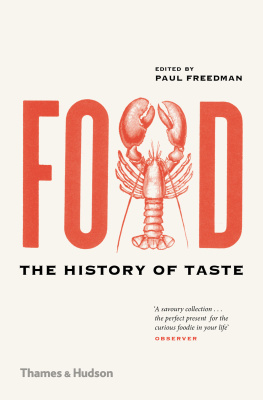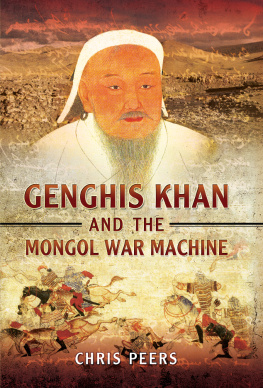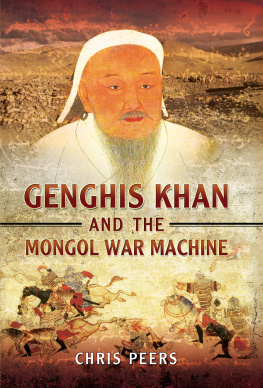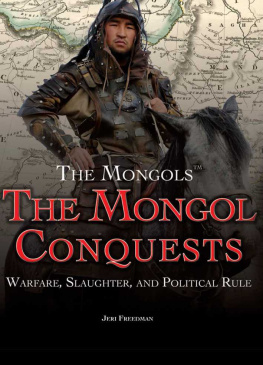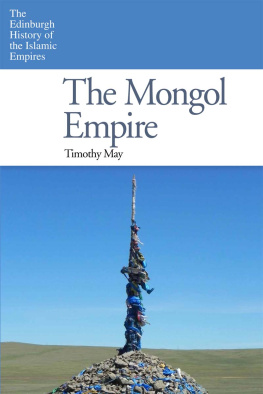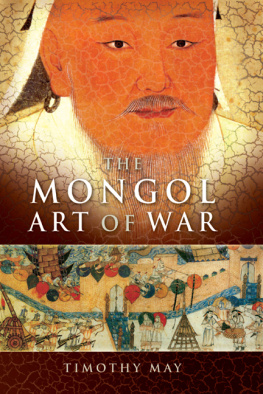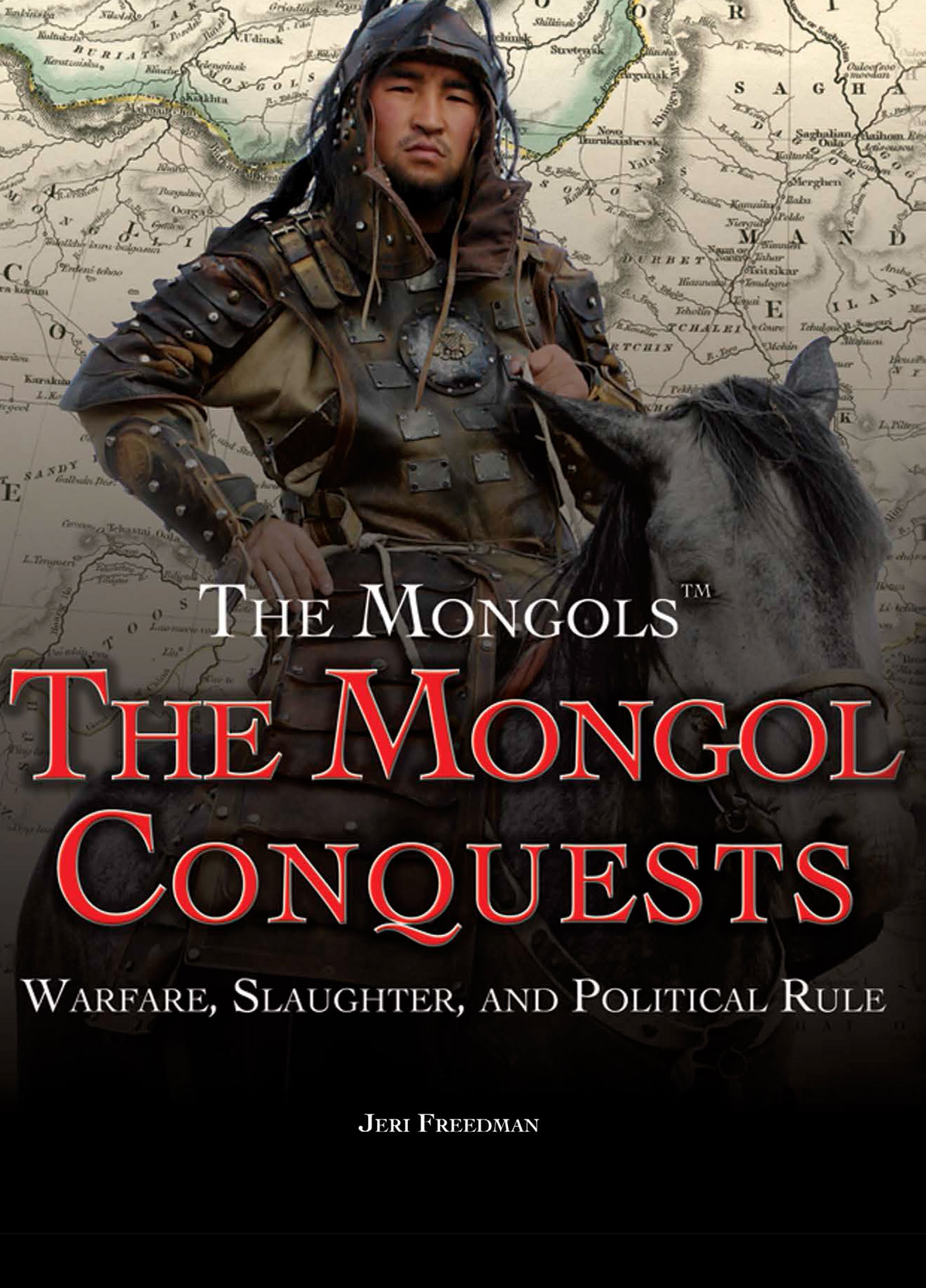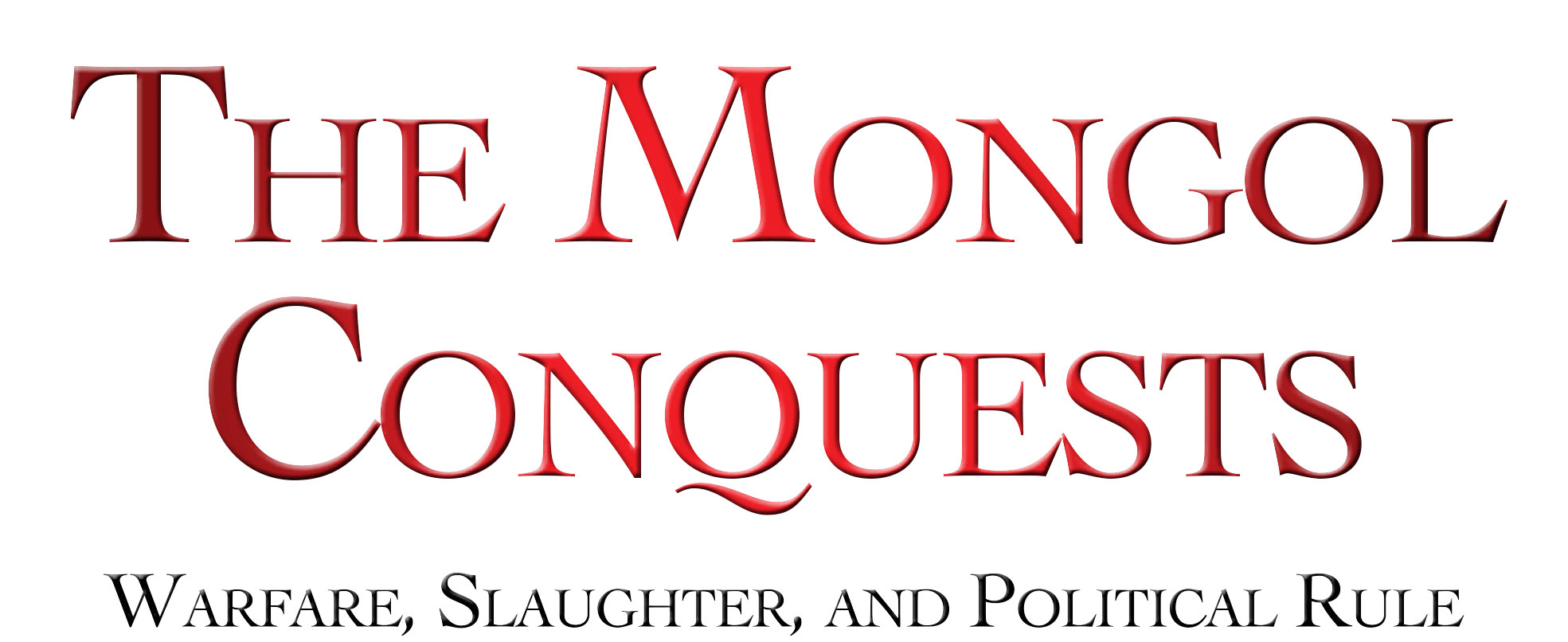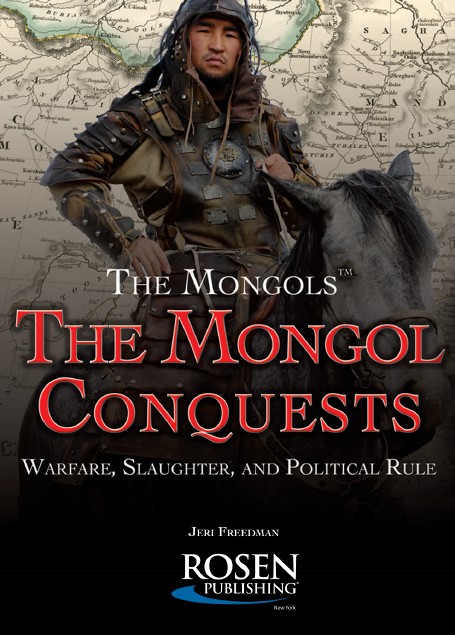- Chapter 1
The Rise of a Conqueror - Chapter 2
A Conquering Army - Chapter 3
Conquering Asia - Chapter 4
The Invasion of Europe - Chapter 5
An Empire and a Dynasty - Chapter 6
Ruling an Empire
Published in 2017 by The Rosen Publishing Group, Inc.
29 East 21st Street, New York, NY 10010
Copyright 2017 by The Rosen Publishing Group, Inc.
First Edition
All rights reserved. No part of this book may be reproduced in any form without permission in writing from the publisher, except by a reviewer.
Library of Congress Cataloging-in-Publication Data
Names: Freedman, Jeri, author.
Title: Mongol conquests : warfare, slaughter, and political rule / Jeri Freedman. Description: First edition. | New York : Rosen Publishing, 2017. | Series: The Mongols | Audience: Grade 7 to 12. | Includes bibliographical references and index.
Identifiers: LCCN 2015047621| ISBN 9781499463606 (library bound) | ISBN 9781499463583 (pbk.) | 9781499463590 (6 pack)
Subjects: LCSH: Mongols--History--To 1500.
Classification: LCC DS19 .F74 2016 | DDC 950/.2--dc23 LC record available at http://lccn.loc.gov/2015047621
Manufactured in China
CONTENTS
Chapter 1
The Rise of a Conqueror
Chapter 2
A Conquering Army
Chapter 3
Conquering Asia
Chapter 4
The Invasion of Europe
Chapter 5
An Empire and a Dynasty
Chapter 6
Ruling an Empire
I ntroduction
People have long been fascinated by the Mongols and their conquest of millions of miles of Asia and eastern Europe in the thirteenth century. Contrary to popular portrayal, the Mongols were not simply bloodthirsty barbarians cutting a swath of destruction across the Eastern world. They were ruthless in war, but they were also a well-organized military force whose leadership excelled at strategy and military innovation. They pioneered many economic and cultural concepts, including a system of advancement based on merit rather than family ties; religious tolerance; protection of trade routes; a postal system; paper currency; and, in the later empire, support for science, technology, and the arts.
At the time that the Mongols embarked on their conquests, most peoples in the East and Middle East were living in clan-based tribal societies. These tribes were constantly at war with each other, fighting over territory and scarce resources. The Mongols were a group of individual tribes living in central Asia. From their beginnings as a tribal people spread out in small groups across the steppes of central Asia, they became a nearly unstoppable force that conquered much of Asia and Europe. Ultimately they created an empire that stretched across almost nine million square miles (twenty-three million square kilometers). Their empire was nearly nine times larger than that created by the ancient Romans. By 1300, the Mongols controlled nearly one-quarter of the 439 million people in the world at that time.

Why did the Mongols first embark on their conquests in the early thirteenth century? The exact reasons are unknown, but scholars have proposed the following as possible reasons. One suggestion is that a drop in temperature from 1180 to 1220 resulted in a reduction in good grazing land for the Mongol herds, which were critical to their survival. The need to find more and better land may have contributed to their desire to move out of their traditional homeland. A second factor was probably the efforts by the Jin dynasty (which controlled northern China) and the Xia dynasty (which controlled northwestern China) to cut off trade between China and the Mongols. The Mongols relied on trade for many goods they needed to survive, and this action may have led them to embark on raids and invasions into China.
Whatever the reasons, Genghis Khan, born on the Asian steppes, united the various nomadic tribes of northeast Asia and set out on a series of conquests that ultimately created an empire stretching from the Pacific Ocean to eastern Europe. This book will describe the Mongol conquests, the strategies and tactics that made the Mongols such successful warriors, the specific engagements that resulted in the creation of the empire, the nature of Mongol rule, and the cultural impacts of their widespread conquest.
T he Mongols lived on the steppes (plains) of central Asia in an area whose northern edge bordered Russia and China. The Mongols were a tribal people. In the twelfth century, about seven hundred thousand Mongols lived in small groups spread out across the steppes. Constantly on the move, they had few resources and nothing to fall back on when times were hard. It was from this environment that the Mongols rose to create the largest land empire in history.
G enghis K han
When Genghis Khan (1162-1227) was born, he was named Temujin. He lived in an area that today forms the border between Mongolia and Siberia. The world into which he was born was characterized by constant warfare between clans. His family held a powerful place in his clan. However, after rivals murdered his father, the clan abandoned his family to escape the burden of supporting them. In his early teens, Temujin killed his older half-brother and assumed the role of head of the family. In 1178, at the age of sixteen, he married a woman named Borte, with whom he would have four sons and several daughters.

Genghis Khan, founder of the Mongol empire, leads his tr ie boy named Temujin would become one of the ors in history.
T he E arly B attles
Not long after Temujin married Borte, members of a rival clan, the Merkits, attacked his encampment and kidnapped her. Temujin took the rest of his family and his friends into hiding while the three-hundred-strong band of Merkit warriors searched the countryside for him. When the Merkits left, Temujin set about assembling a large enough force to rescue Borte. Creating alliances with the clans of his friends and of Ong, a close friend of Temujins murdered father, he raised an army of mounted warriors. They attacked the Merkits at an encampment on the banks of the Khilok River in Siberia by mounting a surprise attack at night. Temujin won the battle and rescued Borte. He forced the leader of the Merkits to identify the three hundred warriors who had invaded his encampment and then had all of them slaughtered. This first battle established the teenaged Temujins reputation as a warrior who could raise and manage an army.
Temujin continued to form alliances and increase his reputation as a powerful warrior. As his fame grew, greater numbers of followers joined him in his early battles. His success in warfare led to his rise as khan (leader of the Mongols). He approached warfare differently than other Mongols, who engaged in warfare among clans. In a revolutionary strategy, he chose to put those allies he deemed most skilled, rather than his relatives, into key positions. When he defeated an enemy force, he executed the leaders and then incorporated the rest of the clan into his own. In this way, his army continued to grow rapidly.

